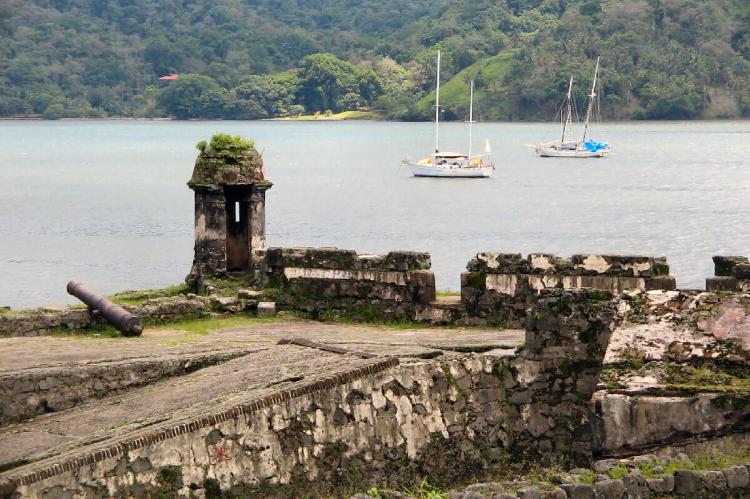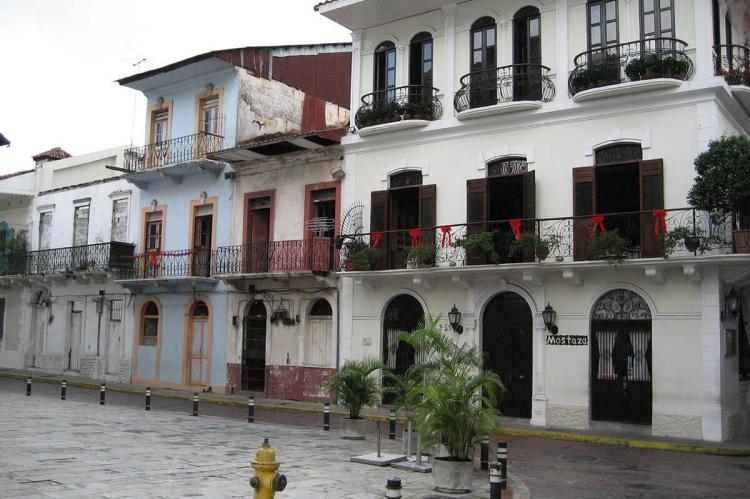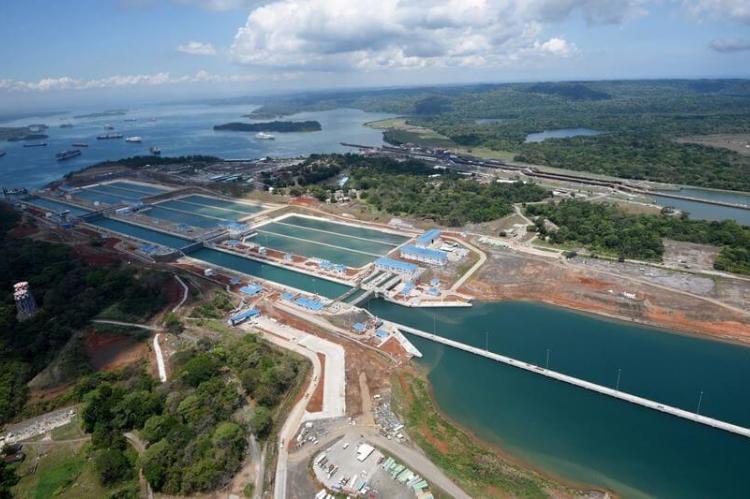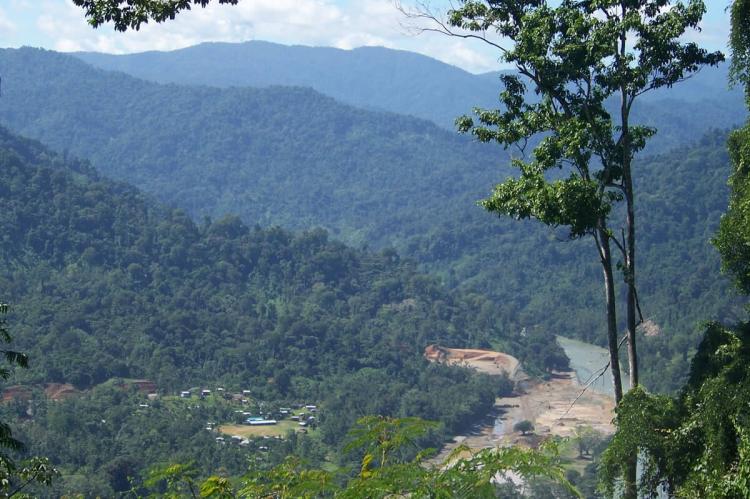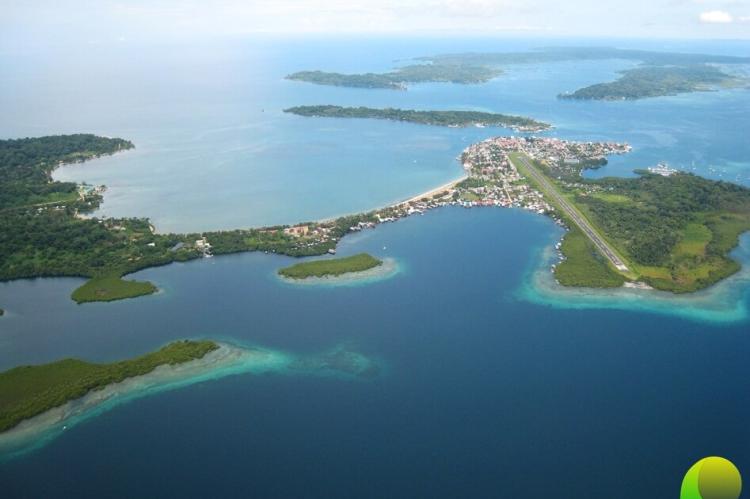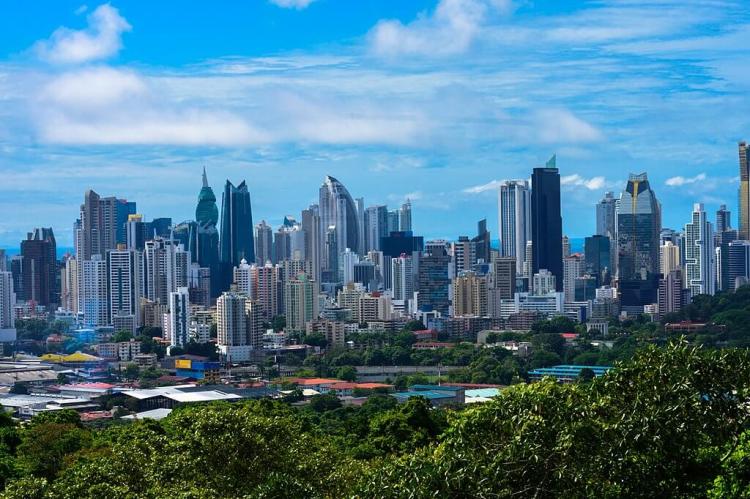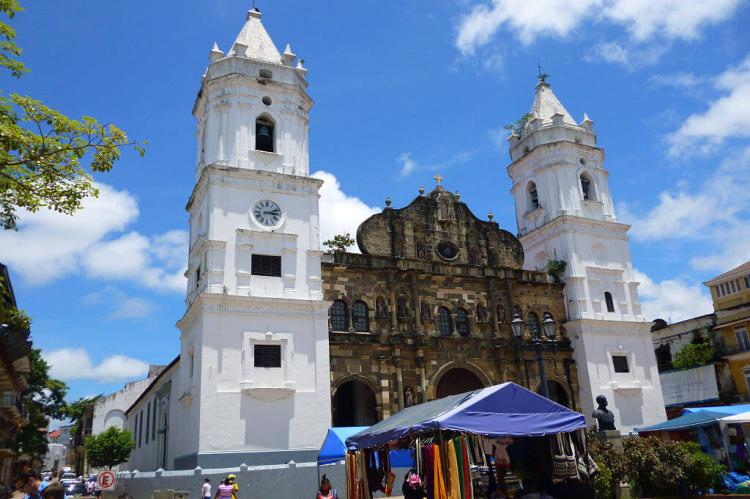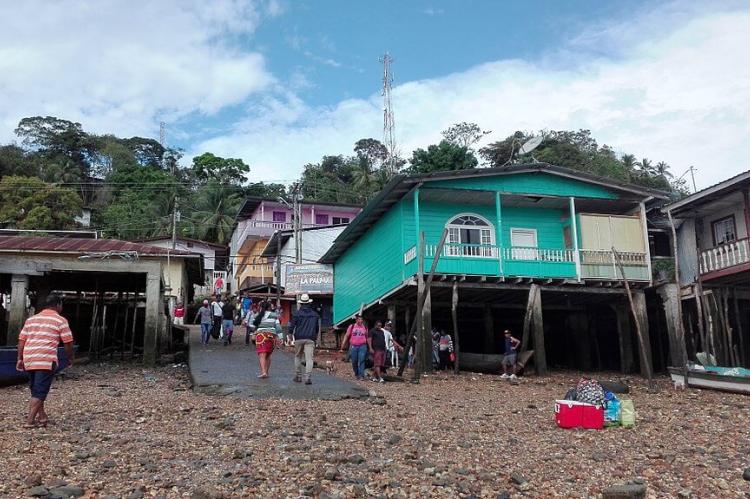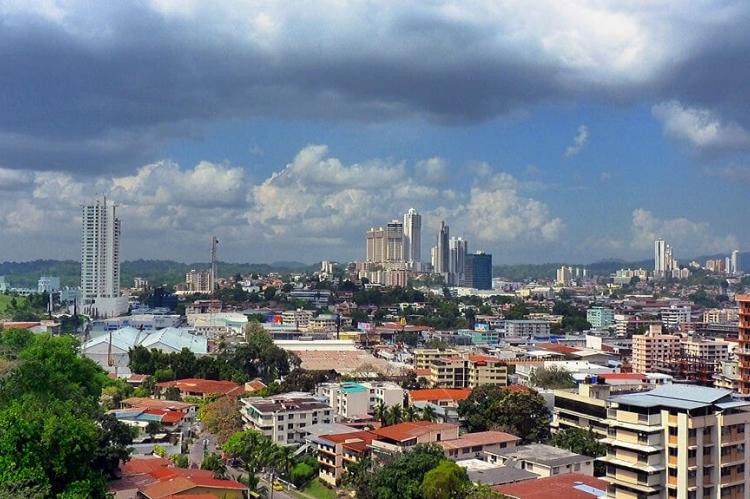Panama: Cultural Landscape
Panama's cultural landscape is a mosaic of indigenous heritage, African influences, colonial history, and contemporary expressions. The country embraces diversity, promoting cultural preservation and celebration as an integral part of its national identity.
The Cultural Landscape of Panama
Panama's cultural landscape is a mosaic of indigenous heritage, African influences, colonial history, and contemporary expressions. The country embraces diversity, promoting cultural preservation and celebration as an integral part of its national identity.
-
Indigenous Heritage: Panama has several indigenous groups, including the Emberá, Wounaan, Ngäbe, and Guna. These communities have rich cultural traditions, distinctive languages, and a solid connection to their ancestral lands. Traditional practices, such as handicrafts, music, dance, and spiritual ceremonies, play a significant role in their cultural expression.
-
Afro-Panamanian Culture: Descendants of enslaved Africans who arrived during the colonial era have contributed significantly to Panama's cultural fabric. Afro-Panamanians have vibrant traditions, including music genres like Congo, Mejorana, and Calypso, and unique dances and festivals such as the Congo Dance and the Pollera Parade.
-
Spanish Colonial Heritage: Panama's colonial past has left a lasting impact on its cultural landscape. Historic cities like Panama City's Casco Viejo showcase Spanish colonial architecture, cobblestone streets, and churches. The fusion of Spanish architectural styles with local materials and techniques is evident in many buildings nationwide.
-
Carnival Celebrations: Panama is renowned for its lively carnival celebrations before Lent. These festivals feature parades, vibrant costumes, traditional music, and dancing. The most famous carnival occurs in Las Tablas, where rivaling groups compete for the best floats and performances.
-
Gastronomy: Panamanian cuisine reflects its diverse cultural influences. Traditional dishes include sancocho (a hearty soup), ceviche (marinated seafood), arroz con pollo (chicken with rice), and tamales. The country is also known for its coffee production, an integral part of Panamanian culture and economy.
-
Panama Canal: The Panama Canal is a feat of engineering and an important cultural symbol for the country. It represents Panama's strategic location as a bridge between the Atlantic and Pacific Oceans. The canal has shaped the nation's history, economy, and cultural identity.
-
Folklore and Traditional Arts: Panama has a rich folklore tradition, with stories, legends, and myths passed down through generations. Traditional arts and crafts, such as intricate woven baskets, masks, pottery, and colorful textiles, are essential forms of cultural expression.
-
Contemporary Art and Music: Panama's artistic scene is thriving, with many contemporary artists, musicians, and performers gaining international recognition. The country hosts cultural festivals, art exhibitions, and concerts that blend traditional and modern influences.
Contemporary Influences on Panamanian Culture
These are just some of the contemporary influences facing Panamanian culture. It is important to note that these influences are not always negative. They often lead to positive changes in Panamanian society and culture.
-
Globalization: Panama is a globalized country with a strong economy and a strategic location. This has led to various cultural influences worldwide, including North America, Europe, Asia, and the Caribbean.
-
Technology: Technology has significantly impacted Panamanian culture in recent years. The Internet, social media, and mobile phones have made connecting with the outside world easier. This has led to a more cosmopolitan and open-minded culture.
-
Tourism: Panama is a popular tourist destination, significantly impacting its culture. Tourists from all over the world bring their cultural influences, which has helped make Panama more diverse and vibrant.
-
Immigration: Panama has a long history of immigration, and this has also contributed to its rich cultural mix. People worldwide have come to Panama for a better life and brought their cultures with them.
Challenges Facing Panamanian Culture
These are just some of the challenges facing Panamanian culture. It is crucial to address these challenges to protect and preserve Panamanian culture for future generations.
-
Illegal Immigration: Panama faces challenges with illegal immigration through the Darién Gap, the remote, roadless stretch of jungle that borders Colombia and Panama. It's one of the world's most dangerous migration routes.
-
Poverty: Panama has a relatively high poverty rate, a significant challenge for the country's culture. Poverty can lead to social exclusion, crime, and violence, damaging a culture.
-
Economic Inequality: Panama also has a high level of economic inequality. This means a large gap between the rich and the poor, which can also damage a culture.
-
Cultural Assimilation: Panama is very diverse, which can sometimes lead to cultural assimilation. This is when one culture becomes dominant over another, and this can lead to the loss of traditional cultures.
-
Globalization: Globalization can also be a challenge for Panamanian culture. Globalization can spread Western culture, sometimes leading to the loss of traditional Panamanian culture.
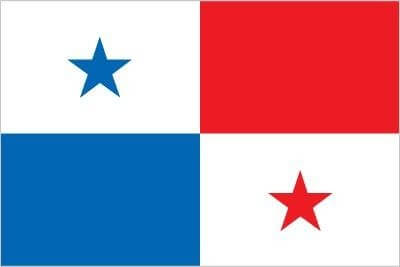
The official flag of Panama
Cultural Geography of Panama
Largest Cities / Metro Areas
Ranked by population estimate (2023):
-
Panama City (408,000 / 1,938,000): Panama City is the capital of Panama and is located on the country's Pacific coast. The city is a major center for finance, commerce, and transportation and is home to the Panama Canal, one of the most important shipping routes in the world. Panama City is also a popular tourist destination with various attractions, including historical landmarks, museums, beaches, and rainforests.
-
San Miguelito (321,000 / 493,000): San Miguelito is a city and district of Panamá Province in Panama. San Miguelito was founded in 1960 and was originally a corregimiento of Panama City. It was granted district status in 1970. The district is home to a diverse population, including Panamanians of African, European, and indigenous descent. The city has many hotels, restaurants, and shops, and it is also home to several attractions, including the San Miguelito Zoo and the San Miguelito Golf Course.
-
Juan Díaz (100,000 / 195,000): Juan Díaz is a residential and commercial district in the southeastern part of Panama City. It is home to various businesses, schools, hospitals, and parks. The community also has several historical landmarks, including the Juan Díaz Church, built in the early 1900s. The district has several hotels, restaurants, and shops, and it is also home to some attractions, including the Juan Díaz Zoo and the Juan Díaz Golf Course.
-
David (82,000 / 150,000): David is the capital of Chiriquí Province in western Panama. It is a major commercial center and a popular tourist destination. The city is in a valley surrounded by mountains and has a tropical climate. David is known for its coffee, fruits, and flowers. It is also a gateway to the rainforests and beaches of western Panama.
-
Colón (77,000 / 110,000): Colón is a city and seaport in Panama, beside the Caribbean Sea, near the Atlantic entrance to the Panama Canal. It is the capital of Panama's Colón Province and has traditionally been known as Panama's second city. Colón was founded in 1850 as the Atlantic terminal of the Panama Railroad. Colón is a major port and commercial center home to a free trade zone. The city is also a popular tourist destination, with several attractions, including the Colón Museum, the Colón Cathedral, and the Fort San Lorenzo.
-
La Chorrera (69,000 / 120,000): La Chorrera is a city and municipality in central Panama, located about 30 km southwest of Panama City. It is the capital of the province of Panamá Oeste. La Chorrera is a popular tourist destination known for its climate, beaches, and proximity to Panama City. The city is also a major agricultural center, producing coffee, fruits, and vegetables.
-
Santiago (65,000 / 100,000): Santiago is the capital of Veraguas province, located in central Panama. It is a major commercial center and a popular tourist destination. The city is known for its colonial architecture, coffee, and proximity to the beaches of Santa Catalina and Coiba Island.
-
Chiriquí Grande (54,000 / 80,000): Chiriquí Grande is a city in the Chiriquí Province of Panama. It is located on the Caribbean coast, about 150 km (93 mi) north of David, the capital of Chiriquí Province. It is a popular tourist destination for its beaches, rainforests, and mountains.
-
Penonomé (49,000 / 70,000): Penonomé is the capital of the Coclé Province in Panama. It is located in the central part of the country, about 150 km (93 mi) west of Panama City. Penonomé is a popular tourist destination known for its colonial architecture, Panamanian handicrafts, and proximity to the beaches of Coclé.
-
Aguadulce (46,000 / 60,000): Aguadulce is a city in the Coclé Province of Panama. It is located on the Pacific coast, about 198 km (123 mi) west of Panama City. Aguadulce is a popular tourist destination known for its beaches, golf courses, and proximity to the resorts of the Azuero Peninsula.
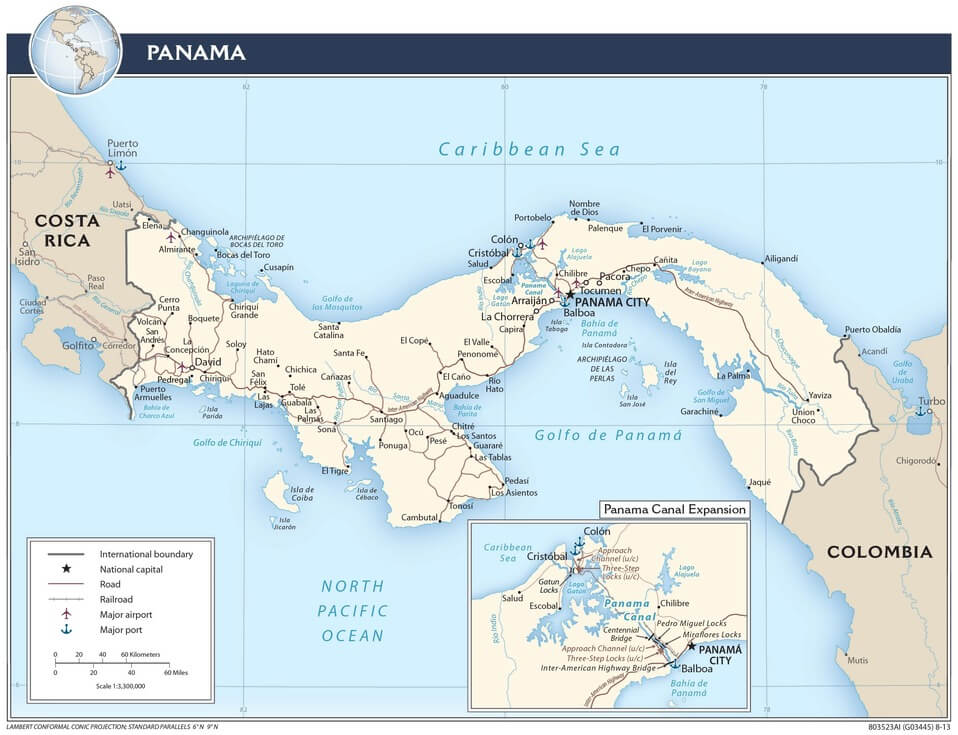
Panama transportation map
Administrative Divisions
Administratively, Panama is divided into ten provinces and five indigenous regions, also known as comarcas, which are considered equivalent to a province. The provinces are divided into municipal districts subdivided into magistracies. Each is subdivided into districts and townships. In addition, two indigenous regions within provinces are considered equivalent to a municipality.
Provinces
-
Bocas del Toro (Capital: Bocas del Toro or Bocas Town): Panama's western province is renowned for its captivating Bocas del Toro Archipelago, boasting pristine beaches, vibrant marine life, and a relaxed atmosphere. The provincial capital, Bocas Town, reflects this charm with its colorful houses and diverse culture. It is a tropical paradise for water sports enthusiasts and nature lovers, offering snorkeling, scuba diving, and surfing activities.
-
Coclé (Capital: Penonomé): Coclé is characterized by its diverse landscapes, including mountains, forests, and agricultural areas. The capital, Penonomé, serves as a hub for local culture and commerce. Coclé is known for its scenic variety and natural beauty, blending rural charm and vibrant communities.
-
Colón (Capital: Colón): Colón encompasses the Atlantic entrance of the Panama Canal and is home to bustling Colón city. Renowned for the Free Trade Zone and its strategic maritime importance, it is a gateway to the Panama Canal's Atlantic side, fostering trade and commerce.
-
Chiriquí (Capital: David): Chiriquí is known for its coffee plantations, national parks, and diverse landscapes. The capital, David, is a hub for commerce and services. Chiriquí offers outdoor enthusiasts opportunities for adventure, from exploring lush forests to enjoying highland vistas.
-
Darién (Capital: La Palma): Darién is characterized by its rich biodiversity and tropical rainforests. La Palma, the capital, is a gateway to this wild region. Home to indigenous communities and unique ecosystems, it's an area of natural beauty and cultural significance. Darién's remoteness adds to its allure, attracting adventurous explorers and conservationists.
-
Herrera (Capital: Chitré): The province of Herrera is predominantly focused on agriculture, mainly sugar cane and rice cultivation. Chitré, the capital, serves as a cultural and economic center. Known for its rural landscapes and traditional way of life, Herrera showcases a blend of agricultural heritage and local traditions.
-
Los Santos (Capital: Las Tablas): Los Santos province is celebrated for its vibrant festivals, beautiful beaches, and cultural legacy. Las Tablas, the capital, is a focal point of local traditions and festivities. A region where art, music, and folkloric events thrive, Los Santos offers a lively and colorful exploration of Panama's heritage and creative spirit.
-
Panamá (Capital: Panama City): The province of Panamá encompasses the capital city, Panama City, and its metropolitan area, a hub of modern infrastructure, commerce, and cultural diversity. Home to the famous Panama Canal, historic sites, and a thriving urban atmosphere, Panamá province represents the country's economic and cultural heart, blending tradition with progress.
-
Veraguas (Capital: Santiago de Veraguas): The province of Veraguas is characterized by its rugged terrain, diverse flora and fauna, and gold mining history. Santiago de Veraguas, the capital, is a local commerce and culture center. Veraguas offers a mix of natural beauty and historical significance.
-
West Panamá (Capital: La Chorrera): The province of West Panamá features a blend of urban and rural landscapes, including suburban areas of Panama City. La Chorrera, the capital, is a growing commercial and residential hub. With its proximity to the capital city, West Panamá offers a range of opportunities for business, education, and modern living while maintaining connections to rural traditions.
Indigenous Regions (Comarcas)
-
Emberá-Wounaan (Capital: Unión Chocó): The Emberá-Wounaan people inhabit this region, known for their vibrant cultural traditions and craftsmanship.
-
Guna Yala (Capital: El Porvenir): Formerly known as San Blas, Guna Yala consists of a series of islands and the mainland. It is known for its autonomous Guna indigenous governance and vibrant culture.
-
Ngäbe-Buglé (Capital: Llano Tugrí): The Ngäbe-Buglé region is home to the largest indigenous group in Panama and is known for its distinct culture and struggles for land rights.
-
Madungandí (Capital: Unión Chocó): The Madungandí region is home to the Emberá-Wounaan people and features tropical rainforests and indigenous communities.
-
Wargandí (Capital: Puerto Obaldía): This region is inhabited by the Guna indigenous people and is located near the border with Colombia.
Indigenous Municipal-level Regions
-
Guna de Madugandí (Panamá Province): The Guna de Madugandí indigenous region is located in the Chepo District of Panamá Province.
-
Guna de Wargandí (Darién Province): The Guna de Wargandí indigenous region is located in the Pinogana District of Darién Province.
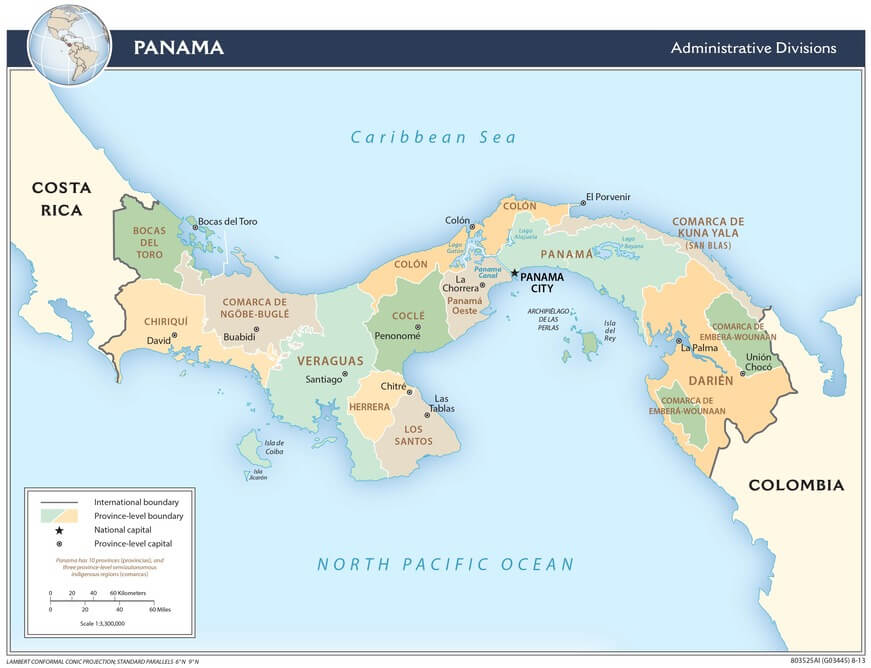
Panama administrative map
Geographic Regions (Zones)
Panama is often divided into the following three major physical regions:
-
Mountains: the Tabasará Mountains (Cordillera Central) in the west and the Cordillera de San Blas in the east
-
Coastal Lowlands: the country's extensive coastal lowlands comprise more than 85% of the total land area and include both the Pacific lowlands and the Atlantic (or Caribbean) lowlands
-
Archipelagos: more than 1,600 islands lie off Panama's northern (Caribbean) and southern (Pacific) coasts
See more: Natural Landscape of Panama
Alternatively, Panama can be divided into the following geographic regions:
-
Central Panama: This region is home to the country's capital, Panama City, and the Panama Canal. It encompasses urban areas, tropical rainforests, and historical sites like Casco Viejo. Central Panama is known for its modern infrastructure, vibrant culture, and the engineering marvel of the Panama Canal.
-
Eastern Panama: This region is known for its lush rainforests, indigenous cultures, and protected areas. It includes the Darien National Park, a UNESCO World Heritage Site and one of Central America's most ecologically diverse regions, and the San Blas Islands, home to the indigenous Guna Yala people.
-
Caribbean West: Located on the Caribbean coast, this region is known for its stunning beaches, turquoise waters, and vibrant Afro-Caribbean culture. It includes destinations like Bocas del Toro, its archipelago of tropical islands, and the historic town of Portobelo.
-
Pacific West: On the Pacific coast, this region offers beautiful beaches, surf spots, and diverse marine life. It includes destinations like Santa Catalina, known for its world-class surfing, and Coiba National Park, a UNESCO World Heritage Site with pristine islands and rich marine biodiversity.
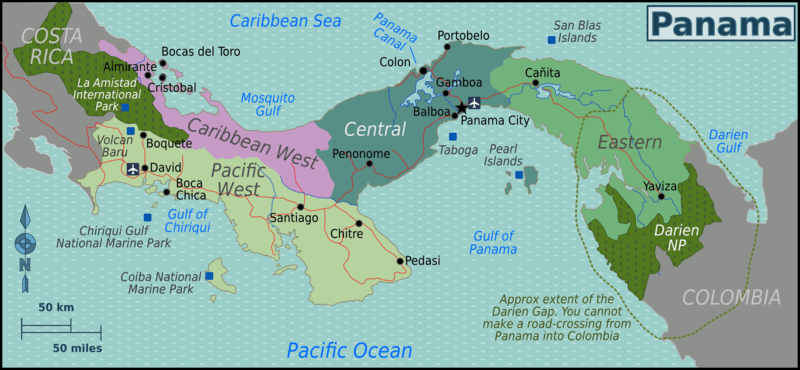
Panama regions map
Historical, Cultural, and Natural Landmarks
Panama, a country that bridges Central and South America, boasts a rich mosaic of historical, cultural, and natural landmarks. Here are some notable examples:
Central Panama
The Central Panama region of Panama offers a variety of attractions, landmarks, and protected areas that showcase the region's cultural, historical, and natural beauty. Some of the notable ones are as follows:
-
Panama Canal: The Panama Canal is a world-renowned engineering marvel connecting the Atlantic and Pacific Oceans. Visitors can witness the operation of the locks, learn about its history, and explore the Panama Canal Museum.
-
Casco Viejo (Old Town): Located in Panama City, Casco Viejo is a historic district known for its colonial architecture, charming cobblestone streets, and vibrant atmosphere. It is home to landmarks like the Metropolitan Cathedral, the Presidential Palace, and numerous plazas, shops, and restaurants.
-
Panama Viejo: Located on the outskirts of Panama City, Panama Viejo is the archaeological site of the original Panama City, which was destroyed by pirate attacks in the 17th century. Visitors can explore the ruins of the old city, including the cathedral tower and the remnants of residential buildings, and learn about Panama's colonial history.
-
Metropolitan Natural Park: As an urban oasis, the Metropolitan Natural Park is a protected area within Panama City. It offers hiking trails, abundant wildlife, and panoramic views of the city and surrounding rainforest.
-
Soberanía National Park: Situated near the Panama Canal, Soberanía National Park is a lush rainforest teeming with biodiversity. Visitors can enjoy hiking, birdwatching, and exploring trails to observe various animal and plant species.
-
Emberá Indigenous Village: Just outside of Panama City, visitors can experience the rich culture of the Emberá indigenous people. It offers an opportunity to learn about their traditions, music, crafts, and way of life.
-
Miraflores Locks Visitor Center: Located at the Miraflores Locks of the Panama Canal, this visitor center provides an up-close look at the canal's operations. Visitors can watch ships navigate through the locks and learn about the canal's history through interactive exhibits.
-
Biomuseo: Designed by renowned architect Frank Gehry, the Biomuseo is a biodiversity museum located in Panama City. It showcases Panama's incredible natural diversity and the impact of the isthmus on global ecosystems.
-
Parque Natural Metropolitano: Another urban park in Panama City, the Parque Natural Metropolitano, is a tropical forest reserve with hiking trails, canopy towers, and opportunities for wildlife spotting.
-
Anton Valley: Located in the highlands of central Panama, the Anton Valley is a picturesque town surrounded by lush mountains and volcanoes. It offers attractions like El Chorro Macho Waterfall, the Nizpero Zoo, and thermal springs.
-
Camino de Cruces National Park: Spanning across Central Panama, Camino de Cruces National Park preserves a historic trail used by Spanish conquistadors. The park features dense rainforests, wildlife, and hiking trails.
Eastern Panama
The attractions, landmarks, and protected areas in the Eastern Panama region showcase the region's natural beauty, cultural heritage, and biodiversity. Some of the notable ones are as follows:
-
Darien National Park: Darien National Park is a UNESCO World Heritage Site and one of Central America's most ecologically diverse regions. Located in the easternmost part of Panama, it features untouched rainforests, pristine rivers, and a wide array of plant and animal species, including jaguars, tapirs, and harpy eagles.
-
Chagres National Park: Chagres National Park is a protected area in eastern Panama that encompasses vast rainforests and the Chagres River basin. It offers opportunities for wildlife observation, hiking, and exploring the region's rich biodiversity. The park is also an important source of freshwater for the Panama Canal.
-
Guna Yala Comarca: The Guna Yala Comarca is an autonomous indigenous territory along Panama's Caribbean coast. It is home to the Guna people, who have preserved their traditional way of life and cultural practices. Visitors can learn about Guna culture, enjoy pristine beaches, and visit traditional communities.
Caribbean West
The Caribbean West region of Panama is known for its beautiful beaches, vibrant culture, and rich biodiversity. These attractions, landmarks, and protected areas combine natural beauty, cultural heritage, and historical significance. Here are some of the notable attractions, landmarks, and protected areas in this region:
-
Bocas del Toro Archipelago: Located in Panama's northwest, the Bocas del Toro Archipelago consists of several tropical islands. Known for its pristine beaches, clear turquoise waters, and lush rainforests, the archipelago offers opportunities for snorkeling, diving, surfing, and exploring the region's unique marine life and biodiversity.
-
Portobelo: Located on the Caribbean coast, Portobelo is a historic town with a rich colonial past. It was once an important port for Spanish galleons transporting treasures from South America to Spain. The city is home to several well-preserved forts, including Fort San Lorenzo and Fort Santiago, which are UNESCO World Heritage Sites.
-
Isla Bastimentos National Marine Park: This protected area is part of the Bocas del Toro Archipelago and encompasses both land and marine environments. It features mangroves, coral reefs, and diverse marine species. Visitors can enjoy snorkeling, hiking through rainforest trails, and spotting wildlife like sloths and red poison dart frogs.
-
San Blas Islands: The San Blas Islands are a stunning archipelago located off the northeastern coast of Panama. Known for its crystal-clear waters, white sandy beaches, and vibrant coral reefs, these islands are a paradise for snorkeling, diving, and relaxation. They are also home to the indigenous Guna Yala people.
-
La Amistad International Park: Although primarily located in Costa Rica, La Amistad International Park extends into the Caribbean West region of Panama. This UNESCO World Heritage Site is one of the largest protected areas in Central America. It encompasses vast tropical rainforests, diverse ecosystems, and numerous endangered species, making it a paradise for nature lovers and hikers.
-
Fort San Lorenzo: Situated near the mouth of the Chagres River on the Caribbean coast, Fort San Lorenzo is a historic fortification built by the Spanish in the 17th century. It was crucial in protecting the valuable treasures transported along the nearby Camino Real. Today, visitors can explore the well-preserved ruins and enjoy panoramic views of the surrounding area.
-
Isla Grande: Isla Grande is a small Caribbean island off the coast of Colón Province. It offers beautiful beaches, clear waters, snorkeling, diving, and water sports opportunities. The island is easily accessible from the mainland and is a popular destination for locals and tourists.
Pacific West
The Pacific West region of Panama offers a range of attractions, landmarks, and protected areas that showcase its natural beauty and cultural heritage. From exploring marine parks to immersing in the charm of coastal towns, this region offers diverse experiences. Here are some notable ones:
-
Coiba National Park: Located in the Gulf of Chiriquí, Coiba National Park is a UNESCO World Heritage Site and one of the largest marine parks in the world. It encompasses the pristine Coiba Island and surrounding waters, home to diverse marine life, including sharks, rays, and sea turtles. Visitors can enjoy snorkeling, diving, and exploring the island's rainforests.
-
Gulf of Chiriquí: The Gulf of Chiriquí is a coastal area known for its stunning beaches, clear waters, and abundant marine life. It offers opportunities for snorkeling, fishing, and boat excursions to nearby islands. Isla Palenque and Islas Secas are popular destinations within the Gulf of Chiriquí.
-
Santa Catalina: A laid-back surf town on the Pacific coast, Santa Catalina is a hub for water sports enthusiasts. It is renowned for its world-class surfing and is a starting point for boat trips to Coiba Island. The town has a relaxed vibe and offers accommodations, restaurants, and surf schools.
-
Pearl Islands: The Pearl Islands, or Archipiélago de las Perlas, are a group of islands located in the Gulf of Panama. Known for its idyllic beaches, crystal-clear waters, and abundant marine life, the Pearl Islands offer swimming, snorkeling, and fishing opportunities. Contadora Island is a popular destination within the archipelago.
-
Isla Taboga: Known as the "Island of Flowers," Isla Taboga is a small island in the Gulf of Panama. It offers picturesque beaches, colorful houses, and a tranquil atmosphere. Visitors can relax on the beach, explore the island's hiking trails, visit the historic San Pedro Church, or take a boat tour.
-
El Valle de Antón: Located in the crater of an extinct volcano, El Valle de Antón is a picturesque town surrounded by lush mountains. It offers hiking, birdwatching, and visiting natural attractions like El Chorro Macho Waterfall and the Nizpero Zoo. The town also has a local market and hot springs.
-
Punta Chame: Punta Chame is a peninsula jutting into the Pacific Ocean, known for its long sandy beaches and strong winds. It is a popular destination for windsurfing, kiteboarding, and other water sports. The area is also home to luxury resorts and beachfront restaurants.
-
Parque Nacional Cerro Hoya: Situated in the southern part of the Pacific West region, Parque Nacional Cerro Hoya is a remote and rugged national park. It features mountains, forests, and wildlife, including jaguars and tapirs. The park offers hiking trails and opportunities for birdwatching and nature exploration.
